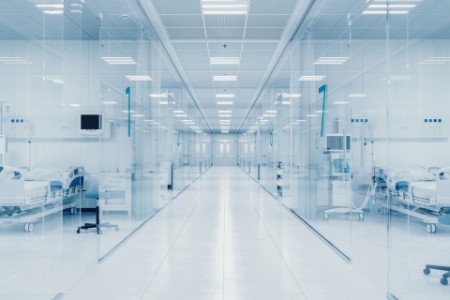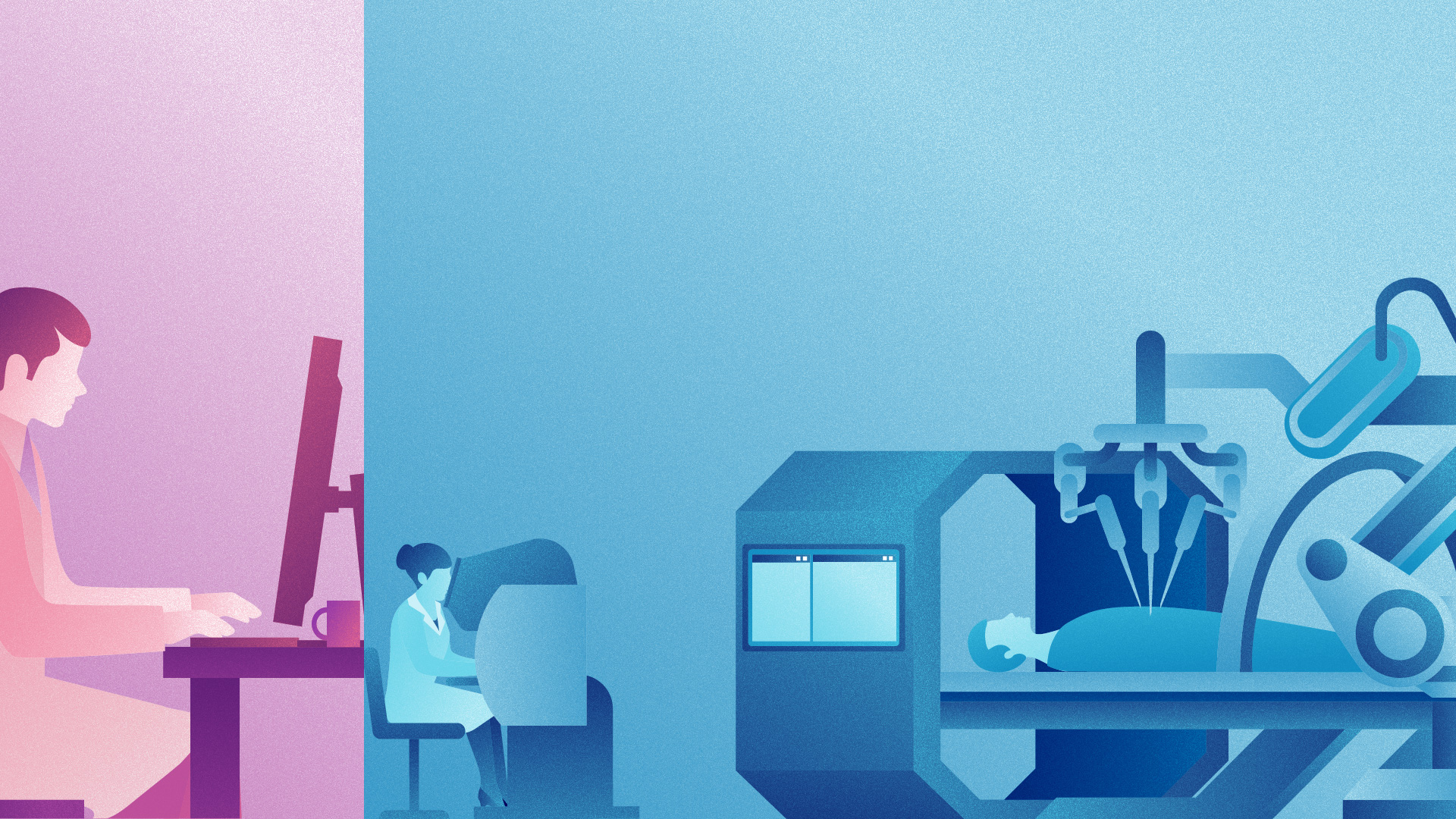Augmented reality-assisted pre-operation planning and surgery
After her lung cancer diagnosis, Emma must undergo a surgery during which malignant and parts of the surrounding tissue are removed. The hospital has received Emma´s electronic health record (EHR) including the bronchoscopy and biopsy data. Her surgeon analyzes the images using augmented reality to ensure optimal planning of the required treatment.
In the near future, pre-operation planning and surgery is going to be facilitated by advanced visualization technologies. They have the possibility to create a holistic view of the patient’s anatomy by using augmented reality, which allows different types of information to be visually overlaid, fused or integrated to reality seen through a camera. With the help of AI, anatomical structures can be automatically detected and displayed, including the extent to which a tissue is affected by a disease. With such information at hand, 3D organ or tissue reconstruction models can be built, which is going to significantly ease planning of a surgery. During the surgery, the information can be projected as virtual components in the surgeon’s line of view, facilitating navigation and decision-making. Thus, advancements in the field of visualization technology might enable more effective and precise pre-and intra-operative procedures.
Robotics-assisted remote surgeries
It turns out that the nodule in Emma´s lung is in a location that is difficult to reach, which could cause complications in the surgery. Therefore, her surgeon decides to follow a robotics-assisted approach and to invite a colleague who is highly experienced in exactly this type of surgeries to accompany her during the treatment remotely.
Robotic support in the healthcare industry is on the rise. Advancements in the field of robotics-assisted surgery promise a new era of minimally invasive and precisely performed procedures. Complex surgeries could be performed in hospitals even without local specialist knowledge. Considering the emerging 5G connection standards, a surgery may be livestreamed with high resolution to an external surgeon or expert team for both advice and active surgery control using tele-robotics[iii]. Future remote surgery settings may be envisioned with tele-robotics being integrated into an augmented reality-enabled telesurgery platform to ensure optimal surgery outcome. Thus, robotics-assisted remote surgeries have the potential to facilitate access to high-quality care and to improve patient experience.
Optimized patient experiences in smart hospitals
After the surgery, Emma wakes up in the hospital, feeling a bit dizzy. Needing to go to the bathroom, she slowly tries to stand up – and is quickly helped by a nurse. While Emma was trying to stand up, the sensors in the hospital bed recognized movement and alerted the nurse.
Digitalization is an ongoing trend also affecting hospitals. Thinking of a hospital in the near future2, patients may be enabled to check-in (and -out) electronically via their smartphone and be guided digitally to their appointment locations. Like Emma, patients may have an EHR summarizing their health-related information, so that all required information can be easily accessed, reviewed, and cross-checked. In case lab tests are required, samples may be analyzed and interpreted automatically with results being directly added to the patient´s EHR – a possibility which is very close to reality already. During their stay in the hospital, patients may receive wearable sensors for real-time monitoring of their vital signs and movements, triggering an alert in case of potential risks. Thus, processes in the hospital can be efficiently streamlined and automatized by leveraging smart technologies, which is going to reduce the workload of healthcare professionals and enable them to concentrate their core efforts in providing care for patients.



